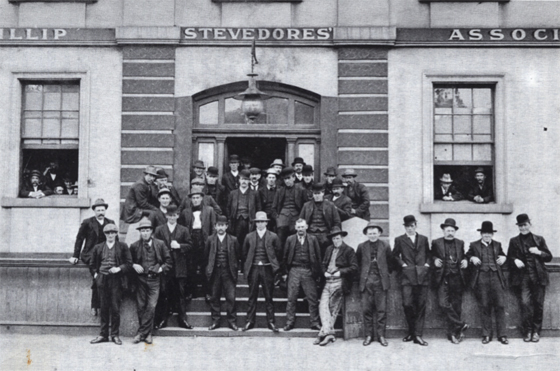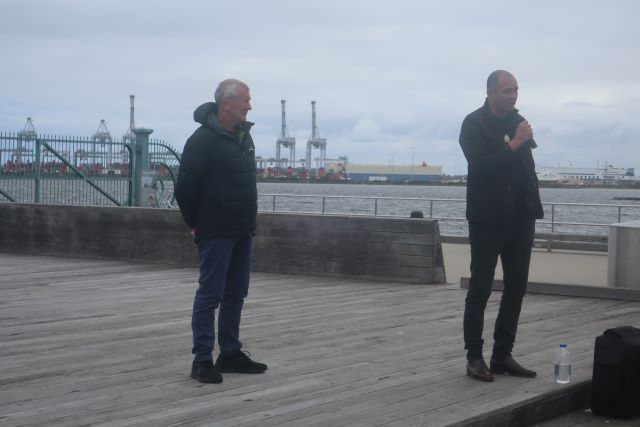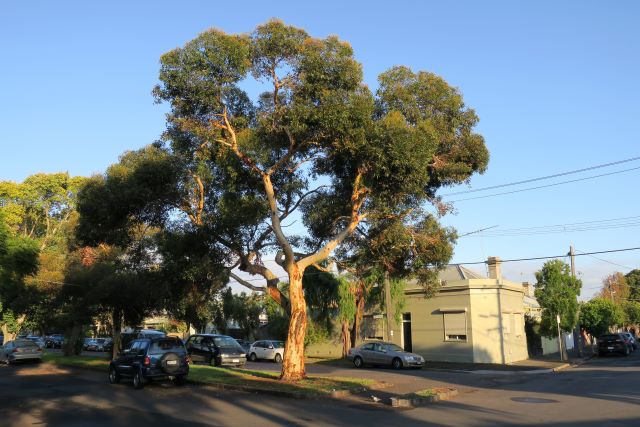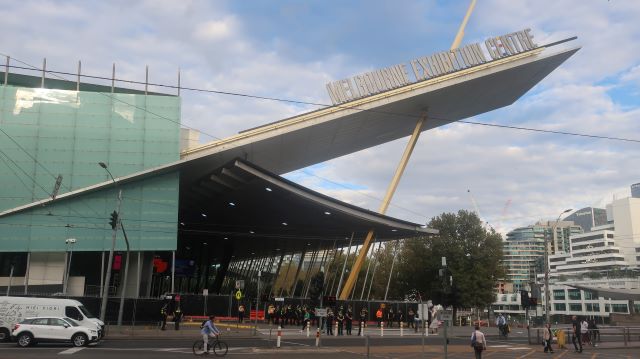Seamen’s union began here in Port
On 13 September, the High Court of Australia upheld a Federal Court decision that Qantas had illegally dismissed 1,700 ground staff.
The Court found that while Qantas may have had a commercial imperative to take that action, it contravened the Fair Work Act 2009.
Qantas outsourced the work to third party operators.
The workers will be compensated but they will not be re-instated.
ABC Four Corners interviewed affected workers. My ears picked up when I heard one of the former employees describe the process for loading an aircraft safely. It was his responsibility to give the final clearance that a plane was safely loaded. Without his authorisation, the plane could not fly.
It was an uncomfortable reminder that the safety of an aircraft can lie as much in the skill of those who load it, as in the skill and training of pilot.
It triggered a memory of a passage in Under the Hook, interviews with waterside workers, about the skill required to load a ship in the pre-container era.
“There’s no such thing as unskilled labour. All labour, all real labour, demands skill. Take a standing break, a wall of cargo. Say the ship is being loaded here. She’s loading half a hold for Singapore here, and in Sydney she’s loading half a hold for Jakarta. Now the half that she picks up here has to stand up on the trip to Sydney with half the hold empty and when they take out half a hold in Jakarta, the rest mustn’t fall down. It’s got to be stacked so that if the ship pitches it won’t collapse or slide out. There’s a special technique.” 1
This week, Kevin Bracken, former Victorian secretary of the Maritime Union of Australia, led a group of MUA members and friends on a walk around Port Melbourne, the birthplace of the Seamen’s Union of Australia, founded in 1872 in the former New Britain Hotel in Stokes St.
It was the first seamen’s union in the world. George Sangster, later Port Melbourne’s representative in the Legislative Assembly, was the organising force behind the union. It was a feat organising such a dispersed workforce across Australia and New Zealand. Sangster was a fiery advocate for safe shipping, and you can read more about him here.
Kevin reprised the early days of the Port Phillip Stevedore’s Association when it had its own rooms in Bay St near the foreshore. The rooms had a library, a billiard table and a bar. It was here that waterside workers were picked up for a job, once a day.

The stevedores’ working conditions were progressively eroded through the late 1920s culminating in the Transport Workers Act 1928 which required all waterside workers to hold a license. It was known as the Dog Collar Act. Ship owners took on an alternative workforce, the Permanent and Casuals. The P & Cs were drawn from university students and newly arrived migrants. They had first preference for jobs.
The growing tension between employers and stevedores was to play out in a violent confrontation on the waterfront in the first weekend of November 1928.
Along the walk, I spoke with a waterside worker involved in the Patrick dispute in 1998. Patrick’s also sought to circumvent the union by employing an alternative labour force.
Justice North required that the workers be re-instated.
Kevin spoke about the MUA’S involvement in many international campaigns: refusing to load ordnance for Vietnam and imposing an oil embargo on South Africa in the apartheid years. The MUA refused to load ships for Chile for the duration of the Pinochet regime.
The MUA has always supported indigenous rights. Now it is throwing its support behind campaigning for a YES vote for the Voice to Parliament. Thomas Mayo, signatory to the Uluru Statement from the Heart and Assistant National Secretary of the MUA, is supported by the Union in his tireless advocacy for the Voice to Parliament.

Meanwhile, two new cranes, the largest in Australia, were conveyed to the automated container terminal at Webb Dock by the Hua Hai Long. Will there be a role for waterside workers be in the future and what stories will be told of the campaign of 2023?
1Under the Hook: Melbourne Waterside Workers Remember: 1900 – 1980 Wendy Lowenstein & Tom Hills
High Court of Australia Qantas Airways Limited & Anor v Transport Workers Union of Australia, 13 September 2023
2 Comments
-
shake seigel
A great reminder that labour is not unskilled. Packing a hold safely is so important for everyone's safety.




Linda
The Patricks dispute was indeed a bitter one. The company sought labour reforms which the union refused so the company outsourced its labour. The end result was an agreement between the company and union that resulted in significant productivity reforms and the reinstatement of most (but not all jobs).